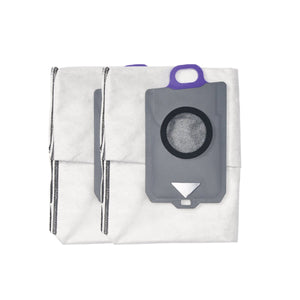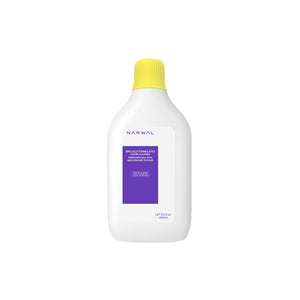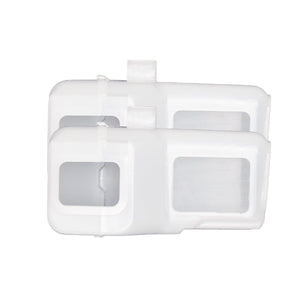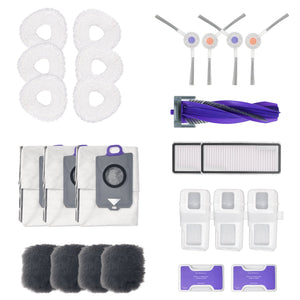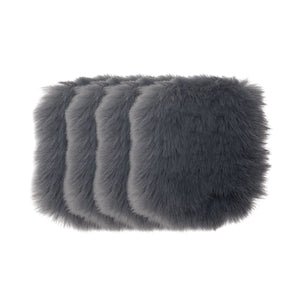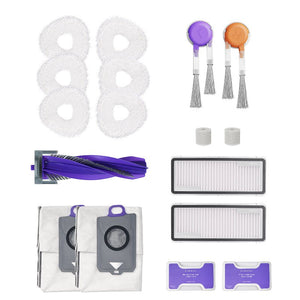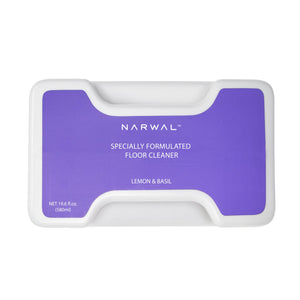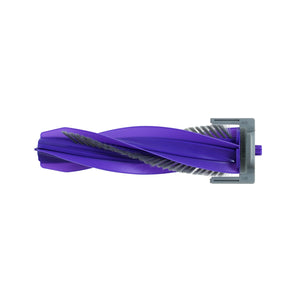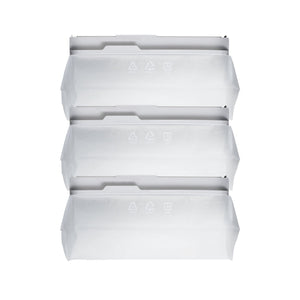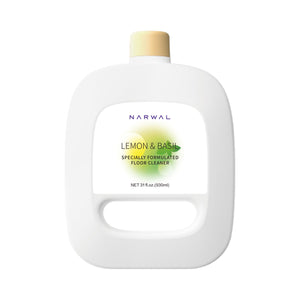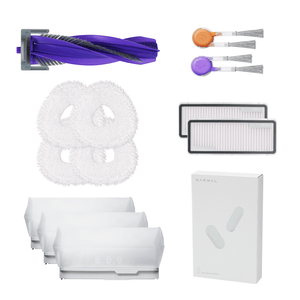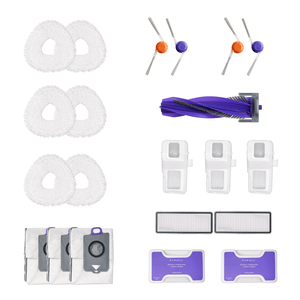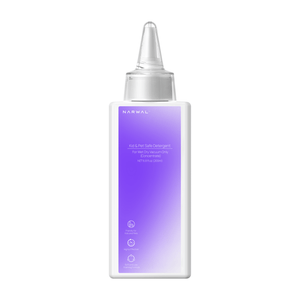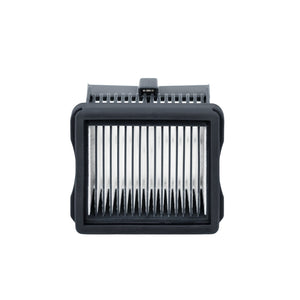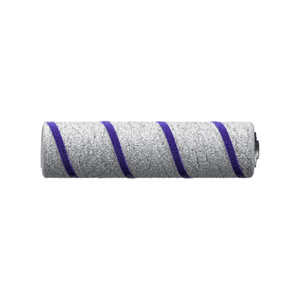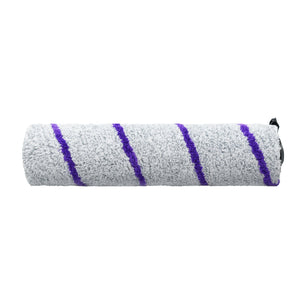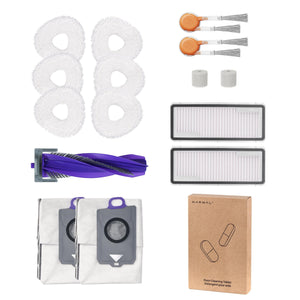What Is a Robot Vacuum with Obstacle Avoidance?
A robot vacuum with obstacle avoidance can detect and steer around everyday items like charging cables, toys, pet bowls, or furniture. It uses smart sensors — such as cameras, lasers, or infrared — to recognize what’s in its way and change direction without bumping into or damaging anything.
The Evolution of Obstacle Avoidance in Robot Vacuums
Early Generations: No Obstacle Avoidance
In the beginning, robot vacuums had no obstacle avoidance. Users had to clear the floor to prevent the vacuum from getting stuck. The only feature was a bump sensor that helped avoid large objects like furniture but failed with small or soft items.
Basic Sensors: Infrared and Bump Detection
Next came infrared (IR) sensors, allowing vacuums to slow down when approaching walls or obstacles. While helpful, these still couldn’t prevent collisions with cords or pet waste.
LiDAR Mapping: Smarter Navigation
The introduction of LiDAR was a major leap. It enabled accurate room mapping and route planning. However, because LiDAR sits high on the robot, it misses low-profile objects like socks or cables.
True Obstacle Avoidance: Multi-Sensor Systems
In recent years, robot vacuums began combining multiple sensors to truly detect and avoid everyday clutter. Key systems include:
-
Cameras: Detect and classify objects, often paired with AI for smarter avoidance
-
Crossed IR sensors: Simple and effective at avoiding nearby items
-
3D structured light: Projects light to detect object shape and depth
-
ToF sensors: Measure distance with light pulses, useful for precise depth sensing
Ongoing Challenges and Future Trends
While obstacle avoidance has greatly improved, no system is perfect. Manufacturers are still refining sensor placement, object recognition, and software tuning. The trend is moving toward smarter AI-assisted detection, combining multiple sensing technologies for more reliable navigation.
Why Do Smart Robot Vacuums Need Obstacle Avoidance?

A robotic vacuum cleaner with object avoidance technology should be able to understand their paths. It tells the difference between objects up ahead and reacts properly to different obstacles. Check below to see what benefits a robot vacuum with excellent obstacle avoidance can bring:
Smarter Navigation Starts with Obstacle Avoidance
Modern robot vacuums no longer rely on the outdated “bump-and-go” method. Instead of running into furniture (or your cat!) over and over, today’s vacuums use obstacle detection to recognize and steer around objects in real time. This leads to smoother paths, fewer interruptions, and much faster cleaning.
Obstacle avoidance helps the vacuum plan its route more efficiently, spending less time backing up or getting stuck—and more time actually cleaning.
Cleaner Results, No Scuff Marks
One underrated benefit of object avoidance is fewer scuff marks on your walls and furniture. With advanced sensors and smart mapping, robot vacuums can detect the exact edges of obstacles, follow walls precisely, and avoid bumping into corners.
This means your robot glides smoothly along furniture instead of bumping into it, helping your home stay cleaner—and your furniture stay intact.
Efficient Cleaning
Obstacle avoidance helps the robot vacuum move smoothly around your home, avoiding furniture, cables, and other objects. This ensures it can clean all areas without interruption. A vacuum with this feature completes cleaning tasks faster, saving time and keeping your home clean with minimal intervention. It also ensures the vacuum covers more ground and cleans more thoroughly, avoiding missed spots or getting stuck.
Less Risk & Loss
Obstacle avoidance prevents damage to both the vacuum cleaners and your belongings. It helps the vacuum navigate around delicate objects. For example, avoid scratches on your walls. Robot vacuums are often equipped with cliff sensors to keep the vacuum from falling down stairs or off ledges, ensuring it operates safely in multi-level homes.
Good Friend of Room Mapping
Obstacle avoidance technology helps with accurate room mapping. When you first set up your robot vacuum, it maps your home. But if you move furniture or leave something in its path, it needs to adapt. With object recognition, a robot vacuum can learn and update its map as your living space changes.
Our Top Choice for AI-Driven Cleaning: Narwal Freo Z Ultra
When smart meets spotless, you get the Narwal Freo Z Ultra. This robot vacuum and mop combo brings together cutting-edge AI, powerful suction, and intelligent cleaning decisions that happen in real time. Want to clean before you even notice the mess? This one’s for you.
Real-Time Decision Making: Freo Z Ultra doesn’t just follow a preset path—it thinks. Dual HD RGB cameras combined with dual AI chips scan and analyze your home in vivid color, identifying over 120 object types and responding to unexpected obstacles in real time. Even if your furry friend leaves a surprise, Freo Z Ultra will know how to handle it.
Unmatched Obstacle Avoidance: From pet toys to power cords, this robot sees and avoids them all. With its tri-laser array, structured light sensors, and infrared + ultrasonic combo, it dodges low-lying and delicate objects within 150mm precision. It can even clean as close as 8mm around furniture legs.
Smart Cleaning That Adapts: Dirt? Liquid spills? Hair in the carpet? Freo Z Ultra detects them and instantly switches modes—raising the mop or lowering the brush as needed. For stubborn messes, it triggers a matrix cleaning pattern to leave nothing behind.
Tornado Suction Meets Whisper-Quiet Design: With industry-leading 12,000Pa suction, a certified tangle-free floating brush, and EdgeSwing edge cleaning tech, Freo Z Ultra captures 99% of dirt and pet hair—even in corners and crevices. And at just 58dB during vacuuming, it’s quieter than your microwave.
Heat-Powered Self-Cleaning Base: The base station isn’t just smart—it’s spa-level smart. It deep cleans your mop with adaptive hot water (104°F to 167°F), dries it to prevent odors, and compresses dust into a 2.5L bag that lasts up to 120 days. All that, and it operates at just 71dB.
AI That Thinks Like You: With LiDAR 4.0, 3D multi-floor mapping, and voice assistant compatibility, Freo Z Ultra creates a tailored cleaning plan and adjusts in real time. It even adapts to different seasons and floor types. Prefer to clean at night? Schedule it all in the app or just say the word.
Perfect for Pets and People: Certified for zero tangling and ultra-quiet operation (as low as 53dB when mopping), this is the robot your pet will actually like. And your floor? It’s getting a spa day.
[cta:narwal-freo-z-ultra-robot-vacuum-mop]
Our Best Pick — Narwal Freo X Ultra

When it comes to obstacle avoidance performance, Narwal Freo X Ultra is definitely one of the best choices you can make. It employs unique technologies and combines both common and advanced sensors. Just to make sure your home cleaning process is fast as wind, safe, and sound. Now, let’s dive deeper and explore those key features of our little champion:

Laser Mapping (LIDAR)
Equipped with laser mapping technology, or LIDAR, the vacuum and mop create a real-time 3D map of your home. This technology uses laser beams to map out your house, enabling the vacuum to navigate complex layouts and around obstacles. Even if you rearrange furniture, the vacuum can adapt and continue to clean effectively.

Structured Light Sensors
Structured light sensors add another layer of obstacle detection. These sensors project a light pattern onto surfaces and analyze the distortions to detect obstacles. This high-resolution mapping ensures that the vacuum avoids even small objects, leaving no area uncleaned.

Infrared and Ultrasonic Sensors
The Freo X Ultra uses both infrared and ultrasonic sensors. They are usually located on the bottom of your robot vacuum. Infrared sensors emit light beams that bounce off obstacles, while ultrasonic sensors use high-frequency sound waves to measure distances. This dual approach helps the vacuum detect and avoid obstacles in real-time, allowing for uninterrupted cleaning.
Tri-Laser Array
This millimeter-precision tri-laser array is the biggest feature of Narwal Freo X Ultra. It detects and avoids small and low-lying objects, which is very important for obstacle avoidance. It's always those inconspicuous little things that get in the way. More than that, its side-laser enables the robot to do its job within millimeters of those obstacles.
Beyond Obstacle Avoidance
Narwal Freo X Ultra is also one of the most powerful robot vacuums and mops we have. Its suction power reaches 8200 Pa, allowing it to remove 99% of particles on hard floors. The DirtSense™ technology auto detects dirt levels to ensure spotless floors, and our robot scrubs away stains with 12N pressure at a 180 RPM speed. Are you worried about missing corners? Our Smart EdgeSwing technology could handle it. No more extra cleaning with a handheld. Just set and let the robot do the work!
Narwal Freo X Ultra features ultra-long battery life. It cleans up to 210 min before heading back to the charging dock. It charges and cleans itself in an all-in-one base station. With auto mop washing, auto drying, auto station cleaning, etc., you don’t need to bother your fingers anymore.
In addition, Narwal Freo X Ultra is super pet-friendly. It boasts an SGS and TÜV certified Zero-Tangling Aerodynamics Brush design. Don’t worry about deeply embedded hairs, Freo X Ultra picks 99% of them even on carpet! As your capable electronic pet, Freo X Ultra is much more quieter than a dog or cat. It features a comprehensive noise reduction design and operates as low as 33dB — quiet like a library!
This premium machine could do much more than those. Check out Narwal Freo X Ultra for more!
[cta:narwal-freo-x-ultra-robot-vacuum-mop]
Value Pick That Packs a Punch: Narwal Freo X Plus
Want something powerful, compact, and smart without breaking the bank? Meet Narwal Freo X Plus—the cleaning companion designed to do more with less.
7800Pa of Pure Power: With industry-grade suction, the Freo X Plus tackles everything from pet food and coffee grounds to long hair and embedded dust. Its cone-shaped floating brush captures 99.5% of hair without tangling, certified by SGS and TÜV.
No-Mess Mopping Made Easy: Freo X Plus doesn’t just vacuum—it scrubs with 6N of downward pressure, lifting tough stains while keeping your rugs dry. Its smart water distribution system covers large areas efficiently with a 280ml tank.
Triple-Laser Obstacle Avoidance: Equipped with front, side, and top lasers, this robot detects and avoids low-lying objects like slippers and chair legs with millimeter-level accuracy. It cleans as close as 0.22 inches from obstacles and adjusts its route in real time.
Compact Dock, Big Storage: Enjoy up to 7 weeks of hands-free cleaning. The stylish, space-saving base compresses dust and empties automatically, keeping maintenance to a minimum.
Smart, Connected, and Personalized: With multi-floor mapping, custom schedules, no-go zones, and voice assistant support (Alexa, Siri), Freo X Plus fits seamlessly into your daily routine. It even generates a detailed cleaning report after every session.
Budget-Friendly. Feature-Heavy. For those who want premium features without the premium price tag, Freo X Plus is a standout choice. Compact, capable, and designed to simplify your life—just set it and forget it.
[cta:narwal-freo-x-plus-robot-vacuum-and-mop]
How to Choose the Right Robot Vacuum with Obstacle Avoidance
Sensor Technology
Check the sensors that the robot vacuum employs. It should have both essential sensors for basic obstacle detection and advanced sensors for home mapping. If your home has multiple floors, cliff sensors are crucial parts that the robot vacuum must have. They prevent the vacuum from falling down stairs or off ledges.
Adaptability
Choose a model that updates its map in real-time. This adaptability allows the vacuum to navigate around new obstacles or changes in your home’s layout without requiring manual intervention.
User Reviews and Ratings
Read user reviews and ratings to get a sense of the vacuum’s real-world performance. Look for feedback on its obstacle avoidance capabilities, reliability, and customer support.
Mixed Floors
Homes with hardwood, tiles, and carpets need a robot that won’t get confused by different surfaces. Models with LiDAR or 3D structured light sensors work better on reflective or dark flooring. They can smoothly adapt across rooms without missing spots or losing direction.
Kids & Pets
Busy home? Choose a vacuum with fast obstacle detection. It needs to react instantly to unexpected movements — like kids running by or pets suddenly darting out. AI-powered models can recognize and avoid objects in real time, making cleaning safer and more reliable.
Thresholds
Thick rugs or raised door frames can stop less capable robots. A good vacuum should recognize these as passable and climb over them easily. Look for models that clear at least 0.75 inches and don’t treat thresholds like walls.
Stairs
Don’t risk a tumble. Cliff sensors are essential for multi-story homes. Combined with virtual no-go zones and smart mapping, they help your robot stay far away from stair edges — even if you’re not home to supervise.
Fragile Furniture
Worried about delicate furniture or tight gaps under couches? Advanced obstacle avoidance helps avoid bumps, but you can go further: use virtual barriers to steer your vacuum away from fragile pieces or tricky corners that could cause damage.
FAQs
Do All Robot Vacuums Have Obstacle Avoidance?
Not all robot vacuums come with obstacle avoidance technology. It is typically found in higher-end models. When purchasing a robot vacuum, it's essential to check the specifications to ensure it includes this feature if it is important to you.
Can Robot Vacuums with Obstacle Avoidance Handle All Types of Obstacles?
While these vacuums are designed to handle a variety of obstacles, there are limitations. They may struggle with very small or very high objects. For example, many of them may fail to avoid pet waste. Regular maintenance and keeping the floor clear of clutter can help the vacuum perform optimally.
How Does Obstacle Avoidance Technology Work?
Obstacle avoidance technology in robot vacuums relies on a combination of sensors, cameras, and mapping software. The sensors detect objects and obstacles in the vacuum's path, while the cameras and mapping software help create a virtual map of the area. This allows the vacuum to plan its route and avoid obstacles effectively.



















